Data Anomalies Search and Export
How to use the Data Anomalies search and export feature.
Purpose
Explore anesthesia forms that are either incomplete or that contain invalid recorded dates and/or times. Quickly access the information necessary to locate and correct problematic forms. Export search results to Excel for extended analysis and reporting.
Searching for Data Anomalies
Accessing Data Anomalies
1. Log into the Graphium Health dashboard at https://dashboard.graphiumemr.com. From the navigation sidebar, click Data Anomalies.
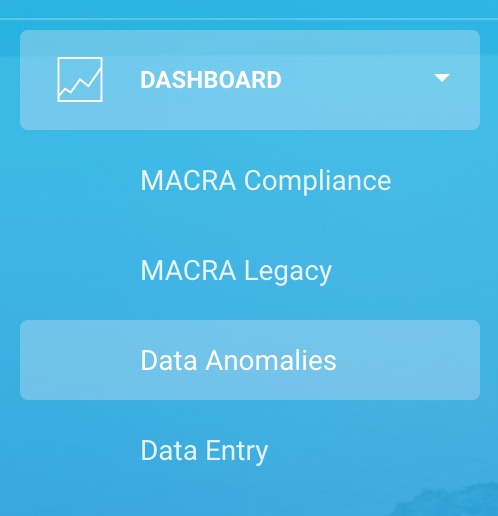
2. The Data Anomalies search feature will be displayed:
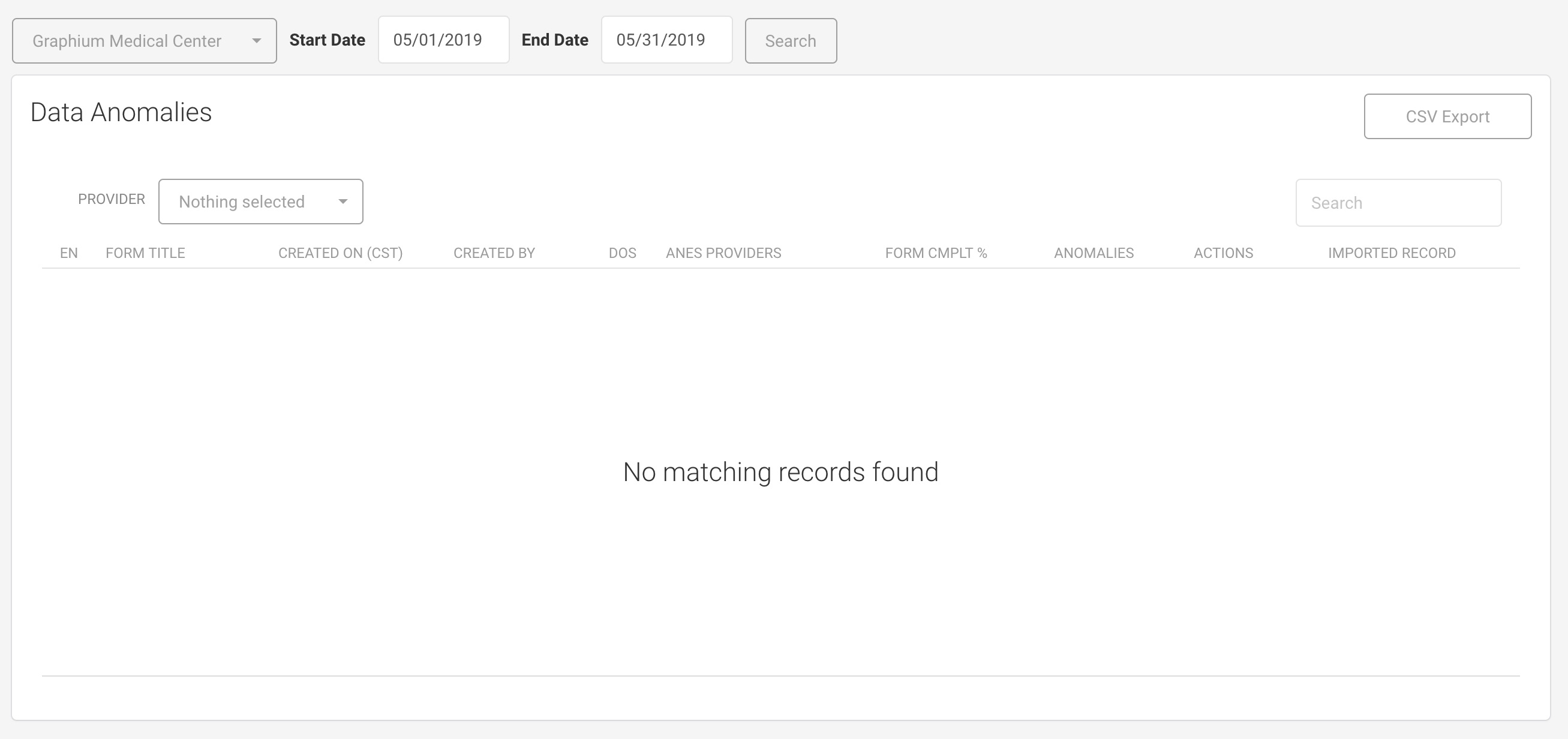
Performing a Search
1. Click on the Facility dropdown, and select a facility:
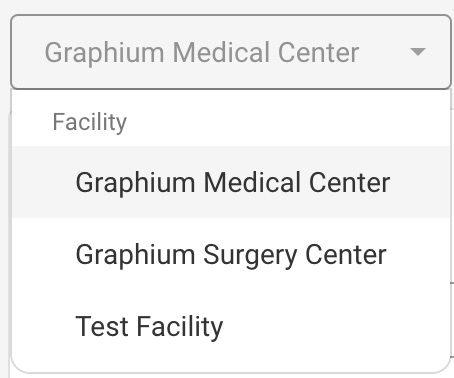
2. Select a date range by choosing a Start and End date from the date dropdown. This date range should include any dates on which an anesthesia form was either created (Central Time) or performed (Date of Service).
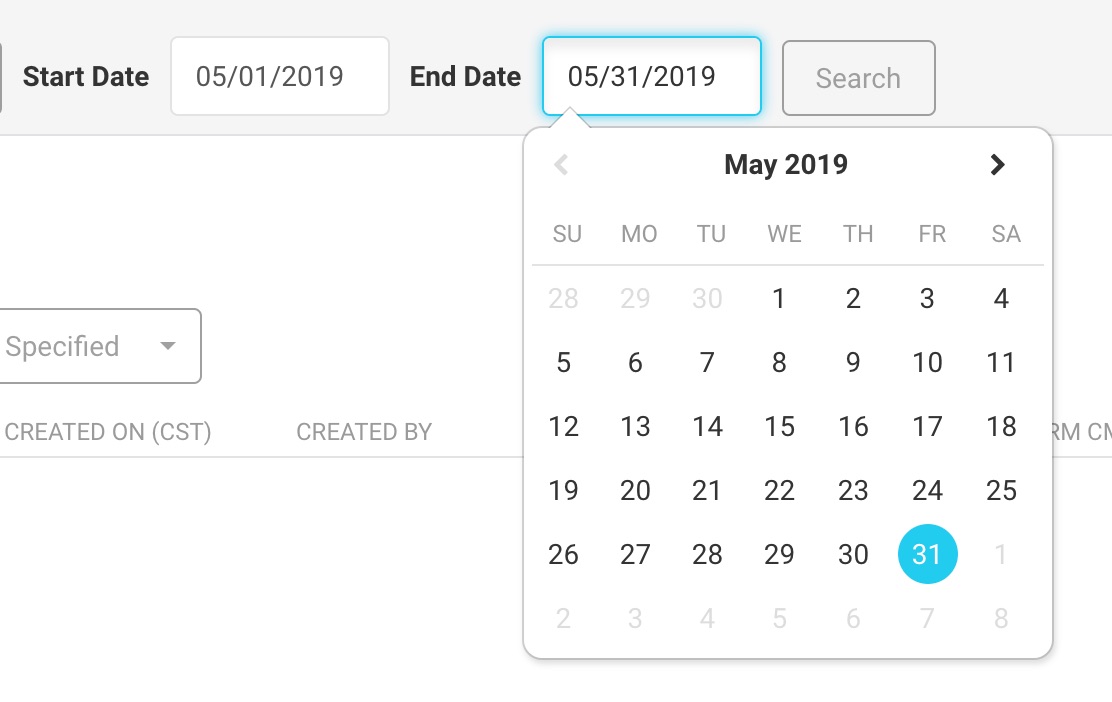
Note that only cases that were created or performed on or after January 1, 2019 may be searched at this time.
3. Click the Search button to run the search based on the parameters you specified.
Filtering Results
Search results may be filtered in two ways:
1. Filter By Provider
Select an Anesthesia provider from the provider dropdown list to display only cases where a specific provider was documented on the case. To view cases for any provider, select "All Providers". To view only cases where there was no provider documented, select "No Provider Specified".
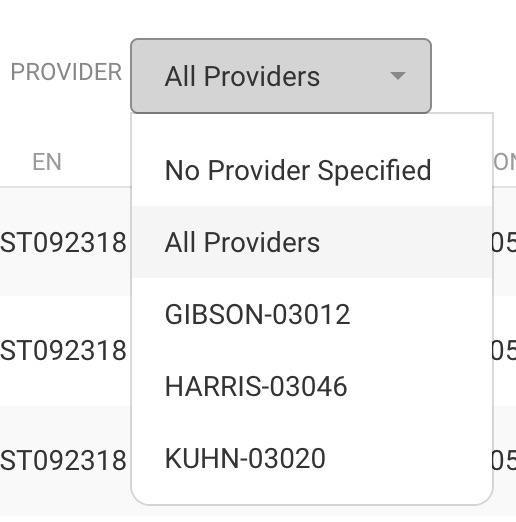
2. Filter using the context Search
The Search box in the upper right corner of the Data Anomalies screen may be used to further filter the search results. Simply type in the text of what you are searching for:

If the text you typed is found anywhere in the search results section, those rows will be shown automatically.
Identifying Anomalies
There are two (2) types of anomalies that are surfaced in Data Anomalies:
1. Incomplete Forms
Any form that is not 100% complete will show up in the search results with the Form Completion % highlighted in red:
2. Date/Time Anomalies
The following time intervals on a case are analyzed to see if they fall outside predefined thresholds:
- Provider Arrival Minutes
- Total Anesthesia Minutes
- Anesthesia Ready Minutes
- Surgery Prep Minutes
- Total Surgery Minutes
- Emergence Minutes
- Epidural Minutes
The threshold for each time interval may be found in the Case Details screen by clicking on View Details for any form in the search results.
Note that these thresholds are subject to change as we refine our search criteria.
Viewing Case Details
To view anomaly details for a form, click on the View Details link in the search results for a form:
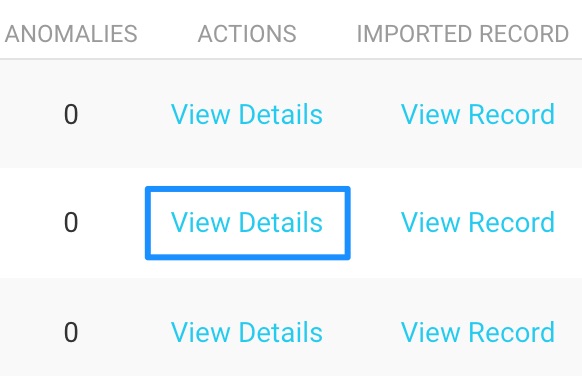
The Case Detail dialog window will open, allowing you to scroll to look through all the relevant data pertaining to the form and all identified anomalies:
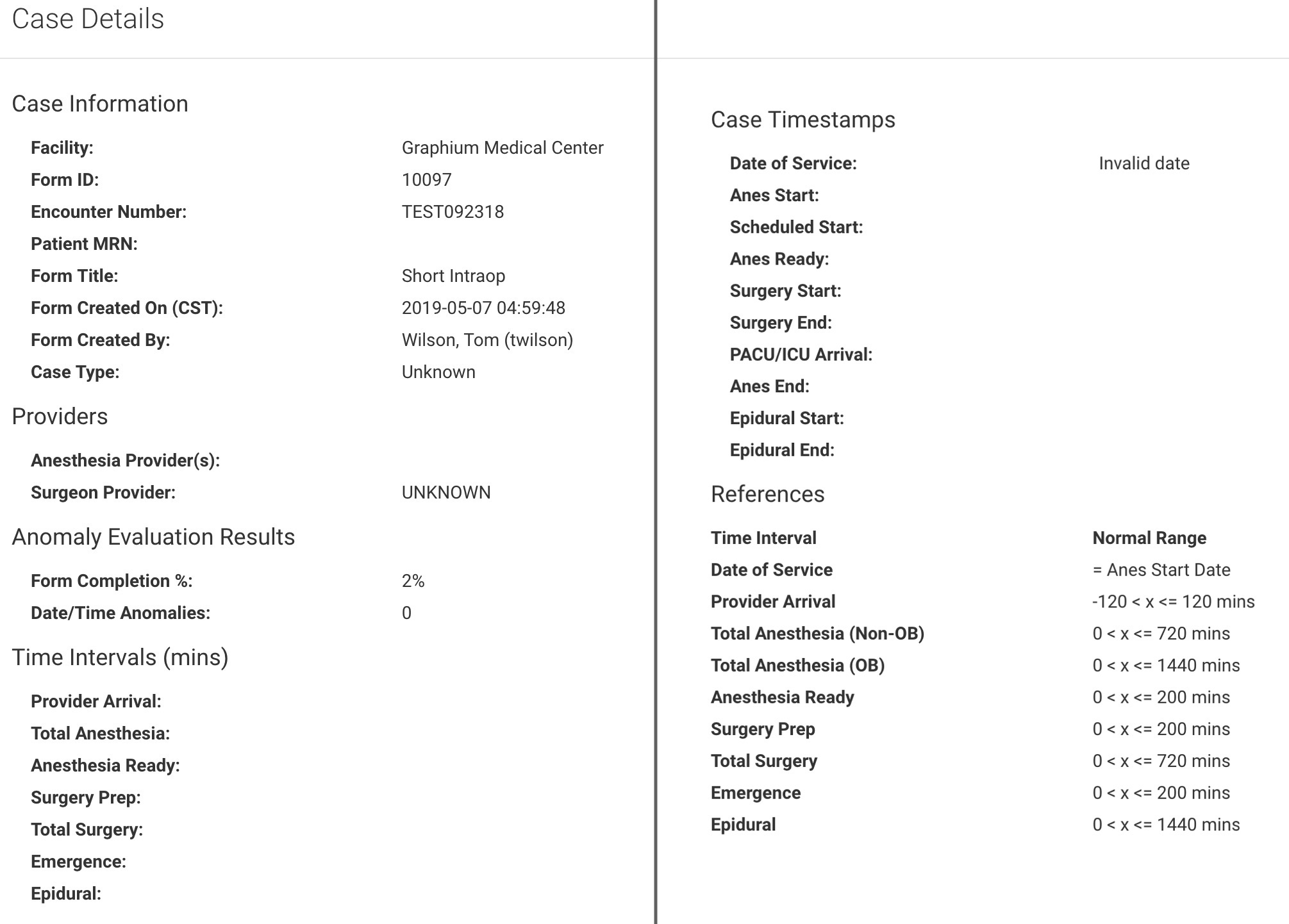
Correcting Cases
To correct data on a paper data entry form, click on the View Record link in the search results for a form. A separate window will be opened for that record in the Collector data entry dashboard.
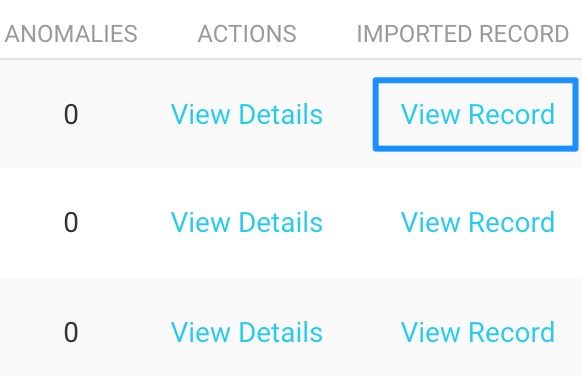
If the View Record link is not shown in the search results for a form, that means the form was captured on an iOS device using Graphium's Anesthesia EMR™ app. Such forms may only be edited using the iOS app at this time.
Exporting Results
Data Anomaly search results may be exported to your local computer in a tab-delimited text format. Such files can easily be opened in applications such as Microsoft Excel for further analysis. To download search results, run a Data Anomaly search, and then click the "Export" button in the upper right portion of the Data Anomaly search screen:
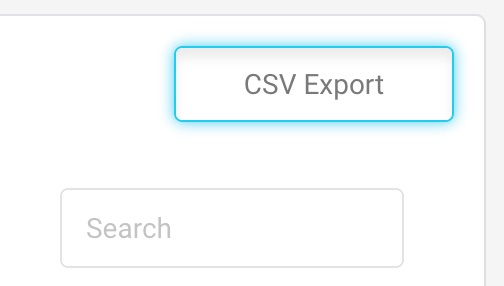
Frequently Asked Questions
What are some examples of how to use the context Search feature?
The following are just some of the ways you can use the context search feature to quickly narrow down the search results:
- Encounter Number - Enter a partial or complete encounter number to quickly find all related forms.
- Form Title - Search only for a specific form title (e.g. "General", "Labor", "Out-of-OR", etc).
- Created By - Enter a partial username to see only forms created by a certain user.
- Date of Service - Enter a specific date to see only cases performed on a that day.
Which roles have access to this feature?
Currently, only users with a role of Organization Administrator have access to this feature.
How do I correct cases that were created on an iOS device?
Note the key details about the form in question (e.g. Facility, Encounter Number, Form Title, Date of Service, etc). Using Graphium's Anesthesia EMR™ iOS application, navigate to the correct facility, then perform an Encounter Number search. Tap on the correct form to open it and make corrections.
Also, rest assured that we understand the importance and value in having the ability to correct any form directly from the dashboard, regardless of how it was created. Stay tuned for future updates on this topic!
Can I adjust the time interval thresholds?
We realize this is a subjective topic, and we did our best at selecting what we deemed to be a reasonable threshold for each specific time interval we measure. That being said, we always welcome your feedback and are happy to consider adjusting these thresholds if a valid case is made for doing so. Please send your feedback to us using either email (support@graphiumhealth.com) or the chat feature located in the lower-right corner of the dashboard.
I'm searching for a specific case and cannot find it. How do I further filter the results?
In this case, the best way to find your case is using the export feature. Broaden your date range to a sufficient timeframe, click search, and then export your results to CSV. Open the text file in Excel, select all columns, and choose Data -> Filter. At this point you should be able to more quickly locate what you are searching for by clicking on the relevant column headers and selecting/deselecting values as necessary.
Why does the Encounter Number change when I export to Excel?
In some cases the patient registration system at a facility will include leading zeroes in Encounter Numbers (or Medical Record Numbers). When you export Data Anomaly results to CSV and then open the file in Excel, those leading zeroes will be truncated by default because Excel will interpret them as "numbers". To change this behavior, you must click on each relevant column during the text import wizard in Excel.
To start the Text Import Wizard, open Microsoft Excel, then select File -> Open, browse to the Data Anomalies file you downloaded (e.g. "DataAnomalies.txt"), and click Open.
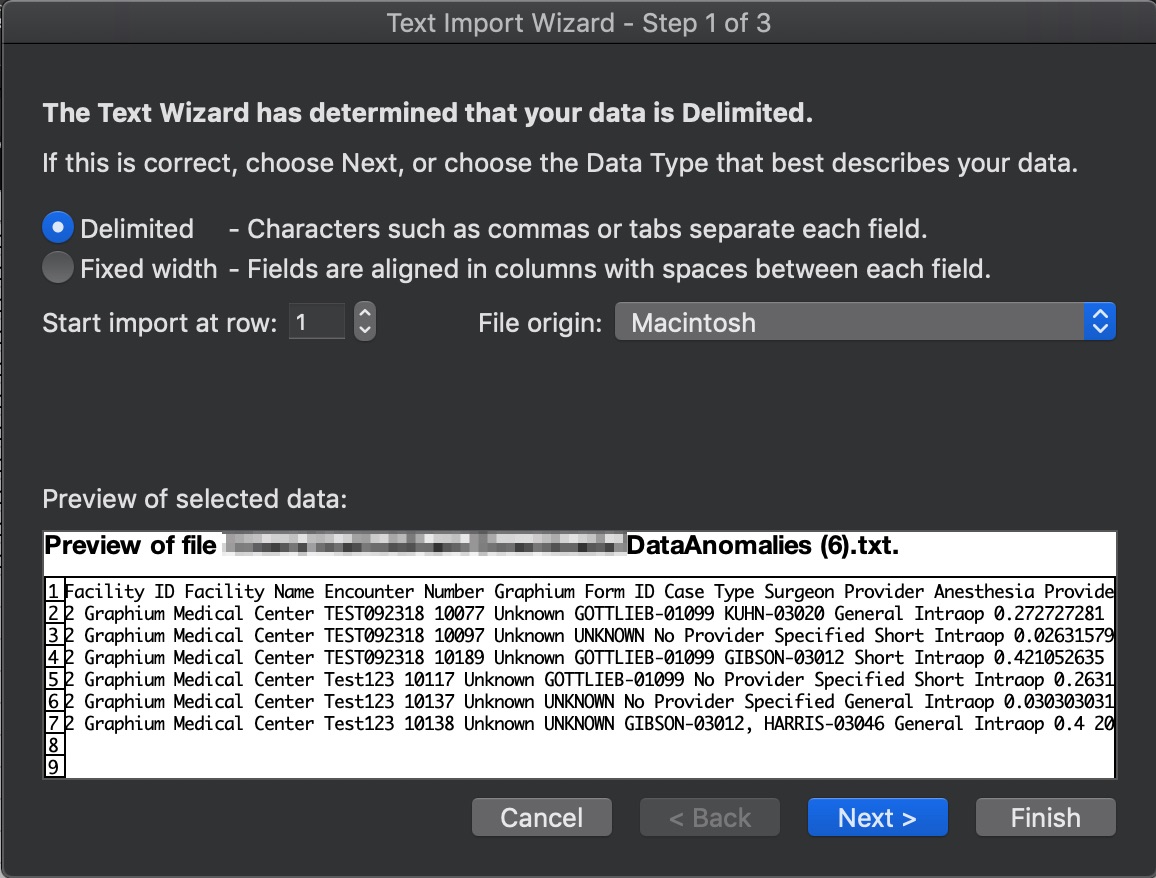
Select Delimited as the Data Type, and then click Next:
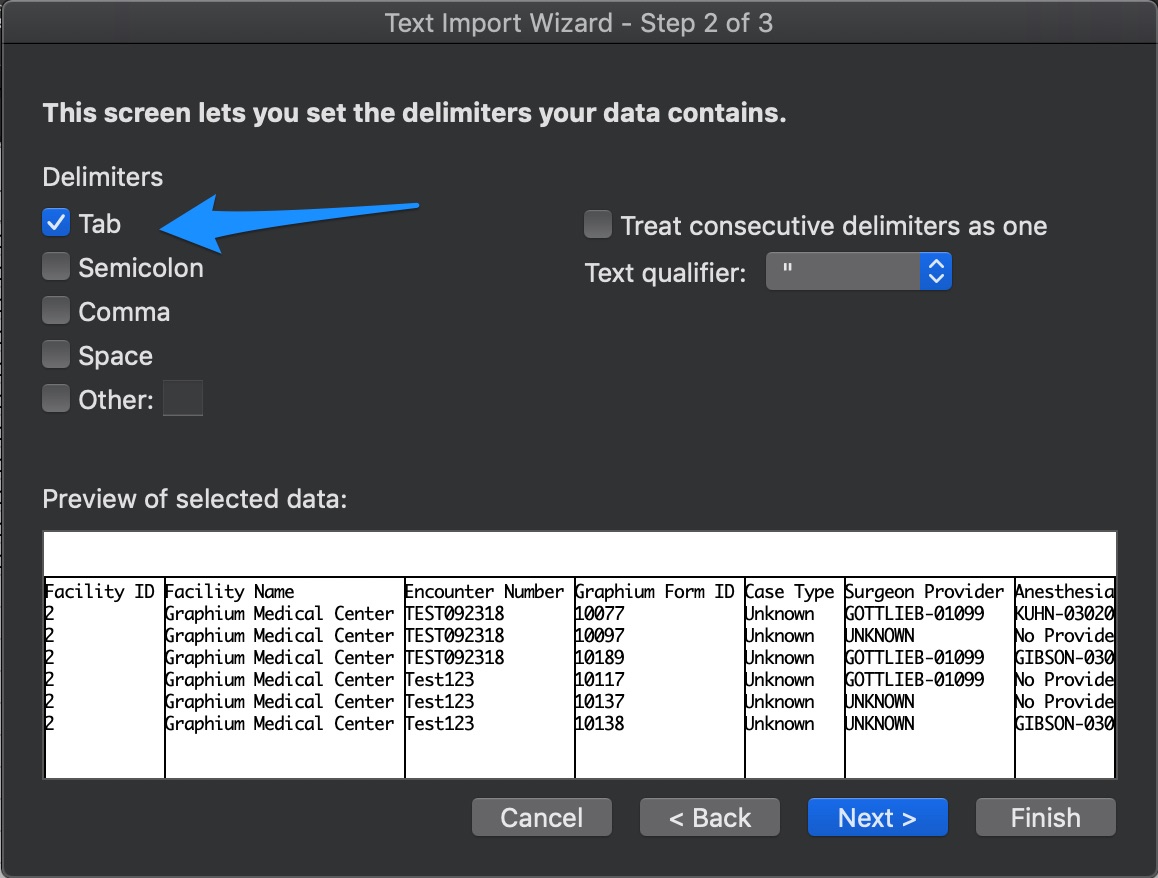
Choose "Tab" for the delimiter, then click Next:
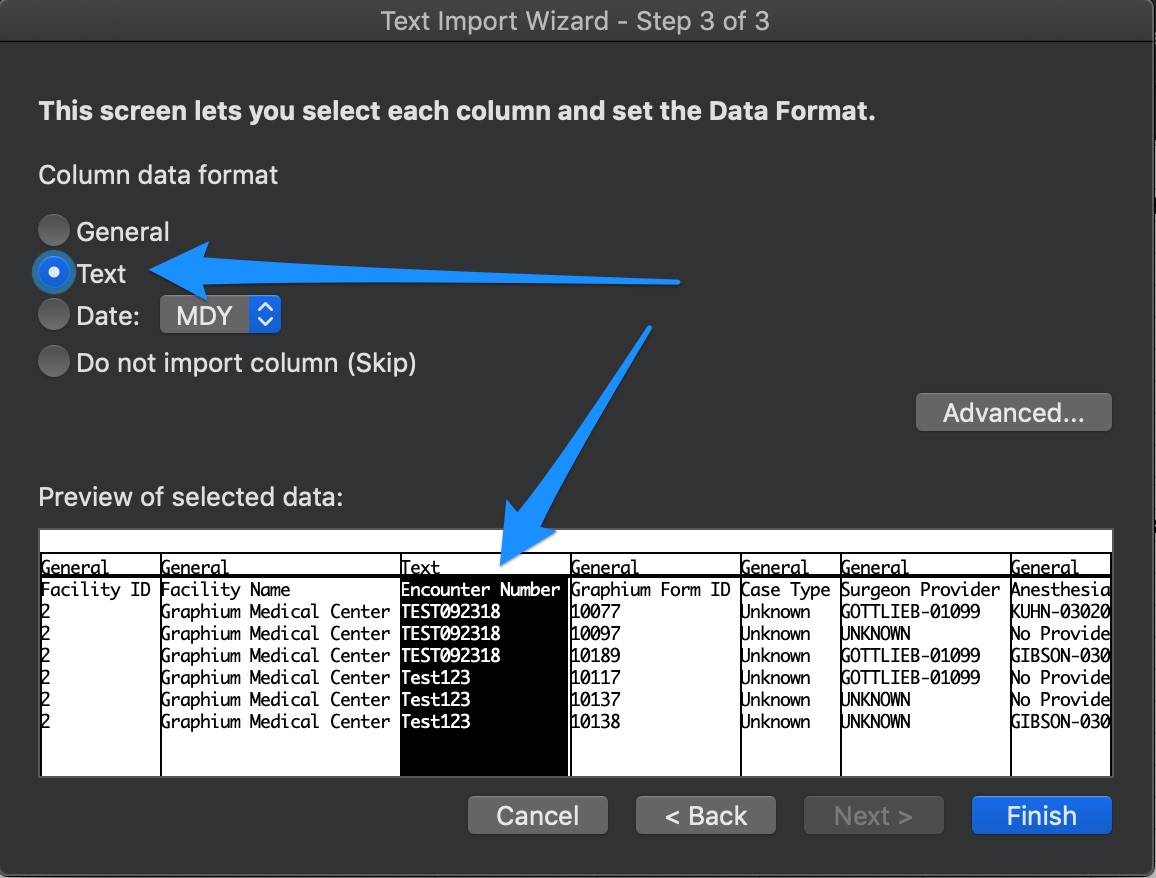
Click on the Encounter Number (and any other relevant) column, change the data format to "Text", then click Finish.
I have a question that is not answered here. What should I do?
Please send a detailed email with your question(s) to support@graphiumhealth.com, or simply start a chat directly from the dashboard using the chat widget at the bottom right hand portion of the screen:
